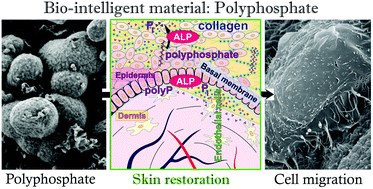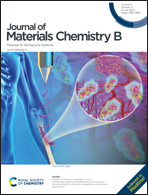A physiologically active interpenetrating collagen network that supports growth and migration of epidermal keratinocytes: zinc-polyP nanoparticles integrated into compressed collagen
Abstract
The distinguished property of the physiological polymer, inorganic polyphosphate (polyP), is to act as a bio-intelligent material which releases stimulus-dependent metabolic energy to accelerate wound healing. This characteristic is based on the bio-imitating feature of polyP to be converted, upon exposure to peptide-containing body fluids, from stable amorphous nanoparticles to a physiologically active and energy-delivering coacervate phase. This property of polyP has been utilized to fabricate a wound mat consisting of compressed collagen supplemented with amorphous polyP particles, formed from the inorganic polyanion with an over-stoichiometric ratio of zinc ions. The proliferation and the migration of human skin keratinocytes in those matrices were investigated. If the cells were embedded into the mat they respond with a significantly higher motility when zinc-polyP particles are present. Interestingly, only keratinocytes that were grown in a polyP environment developed well-structured microvilli, reflecting an increased biological activity. The data show that Zn-polyP particles incorporated into wound mats are a potent cell growth and cell migration-stimulating inorganic bio-material.

- This article is part of the themed collection: Journal of Materials Chemistry B HOT Papers


 Please wait while we load your content...
Please wait while we load your content...